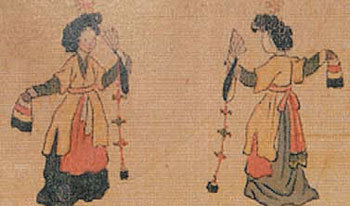Goryeo Music Was World Music

Kim Myeong-jun, a researcher at the institute for Asia and America at Dankook University, said. Goryeo music was world music at a recent academic conference called A Comparative Study on Poetry in the West and East in the Middle Ages.
In his thesis titled Imported Factors in the Royal Music of the Goryeo Dynasty, he claimed that Goryeo music was world music in the sense that the Goryeo people, whether they were royal families or commoners, adopted foreign influences to the music. A prime example is Yeonhwadae (a place where statues of Buddha and Buddhist saints are seated), one of the five Royal Dances of the dynasty. According to Kim, Yeonhwadae refers to Jagimu, a dance from the Bugwi Northern Chinese Dynasty (386-534), which originated from Soreukguk, one of countries in the western part of China.
Gochwiak, music that was played during an honored going of the king, and Gochanggi or Angukgi were also influence from abroad. The names are taken from names of countries in western China, including Gochang, Anguk, or Cheonchuk. Also, foreign musical instruments like the abak were used. An abak is made using the molar teeth of elephants, which were unavailable to the Goryeo.
Kim also said, In Goryeo royal music, Aak and Dangak were from the Song Dynasty (9601279) and the Dang Dynasty (618-907), respectively. Such music from countries in the western part of China and mainland China also affected peoples lives. He pointed out that the Korean fiddle, a musical instrument from countries in the western part of China, appears in Cheongsanbyeolgok, a folk lyric of the dynasty. He explained that music of countries in the western part of China was so deeply rooted that playing musical instruments from the region appears in Cheongsanbyeolgok, which is categorized as a folk music.
polaris@donga.com





![“한동훈, 정치생명 걸고 무소속 출마해 평가받는 것 고려할만”[정치를 부탁해]](https://dimg.donga.com/c/138/175/90/1/wps/NEWS/IMAGE/2026/01/19/133186982.1.jpg)

